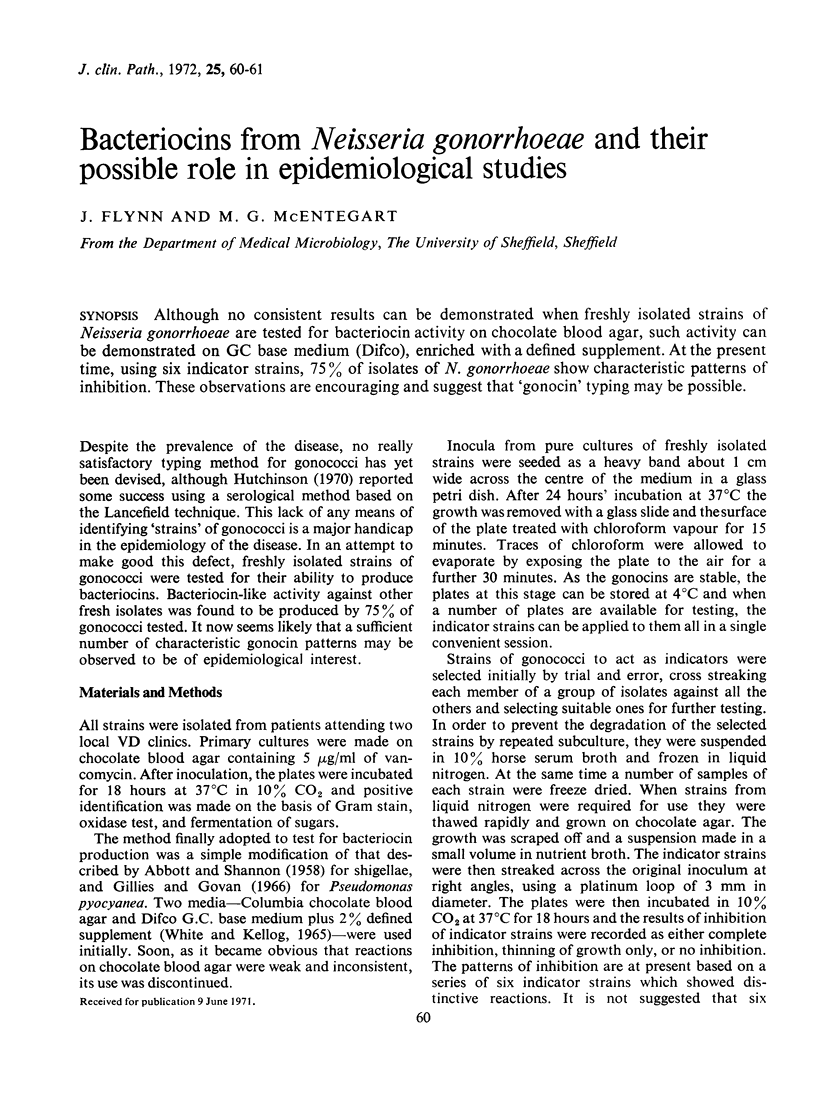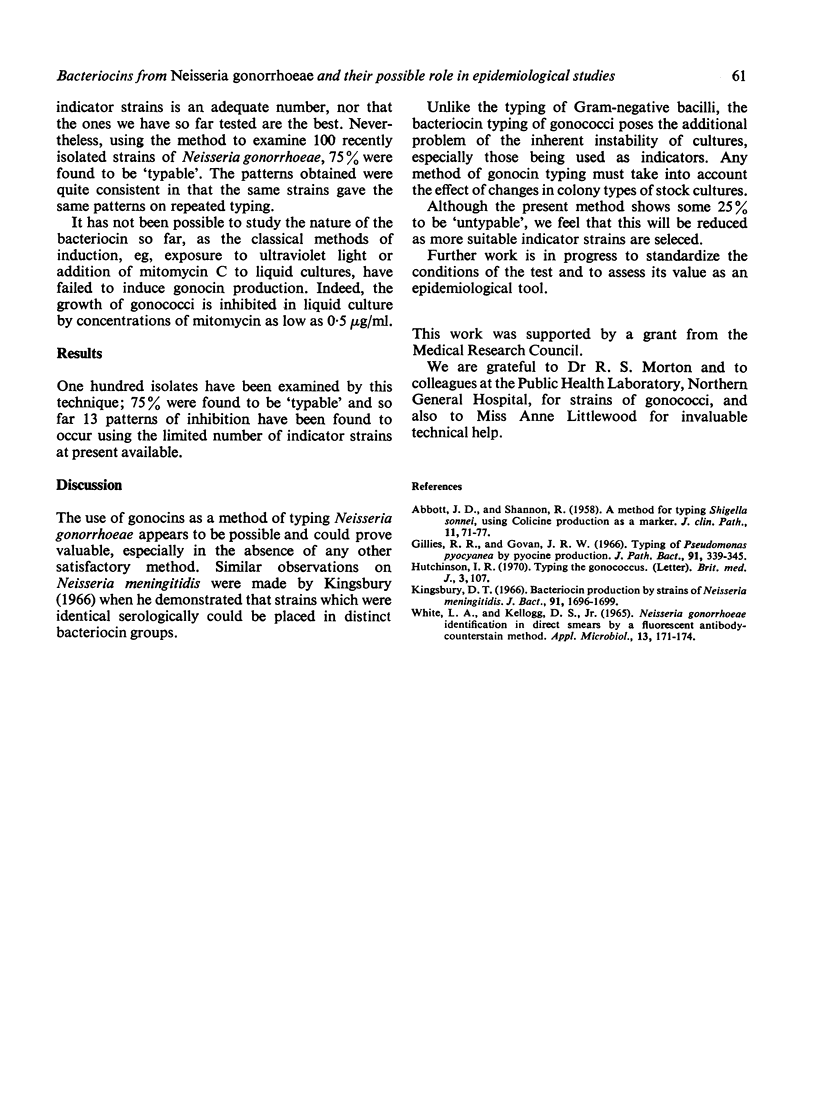Abstract
Although no consistent results can be demonstrated when freshly isolated strains of Neisseria gonorrhoeae are tested for bacteriocin activity on chocolate blood agar, such activity can be demonstrated on GC base medium (Difco), enriched with a defined supplement. At the present time, using six indicator strains, 75% of isolates of N. gonorrhoeae show characteristic patterns of inhibition. These observations are encouraging and suggest that `gonocin' typing may be possible.
Full text
PDF

Selected References
These references are in PubMed. This may not be the complete list of references from this article.
- ABBOTT J. D., SHANNON R. A method for typing Shigella sonnei, using colicine production as a marker. J Clin Pathol. 1958 Jan;11(1):71–77. doi: 10.1136/jcp.11.1.71. [DOI] [PMC free article] [PubMed] [Google Scholar]
- Gillies R. R., Govan J. R. Typing of Pseudomonas pyocyanea by pyocine production. J Pathol Bacteriol. 1966 Apr;91(2):339–345. doi: 10.1002/path.1700910207. [DOI] [PubMed] [Google Scholar]
- Hutchinson R. I. Typing the gonococcus. Br Med J. 1970 Jul 11;3(5714):107–107. doi: 10.1136/bmj.3.5714.107-a. [DOI] [PMC free article] [PubMed] [Google Scholar]
- Kingsbury D. T. Bacteriocin production by strains of Neisseria meningitidis. J Bacteriol. 1966 May;91(5):1696–1699. doi: 10.1128/jb.91.5.1696-1699.1966. [DOI] [PMC free article] [PubMed] [Google Scholar]
- WHITE L. A., KELLOGG D. S., Jr NEISSERIA GONORRHOEAE IDENTIFICATION IN DIRECT SMEARS BY A FLUORESCENT ANTIBODY-COUNTERSTAIN METHOD. Appl Microbiol. 1965 Mar;13:171–174. doi: 10.1128/am.13.2.171-174.1965. [DOI] [PMC free article] [PubMed] [Google Scholar]


